Your cart is currently empty!
Month: July 2024
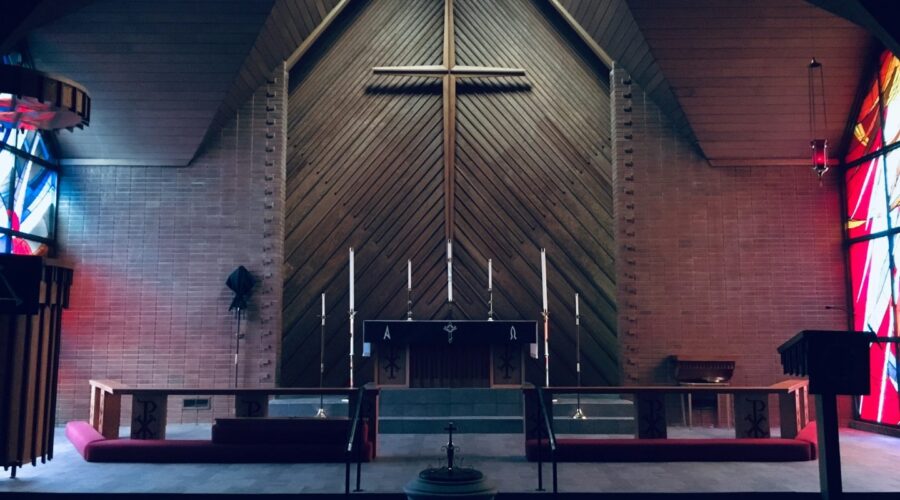
Unveiling the Power of Catholic Prayer: A Comprehensive Guide
Introduction
Prayer is a cornerstone of Catholicism, connecting us to God and deepening our faith. Catholic prayers encompass a wide range of devotions, from the traditional Our Father to specialized prayers for specific needs. Understanding the significance and practices of Catholic prayer can enhance our spiritual growth and strengthen our relationship with God.
Types of Catholic Prayers
- Liturgical Prayers: Used during Mass and other liturgical celebrations, such as the Liturgy of the Hours.
- Devotional Prayers: Personal and private prayers, often used for specific needs or intercessions.
- Marian Prayers: Prayers addressed to the Virgin Mary, including the Rosary and the Hail Mary.
- Scriptural Prayers: Based on passages from the Bible, such as the Lord’s Prayer and the Psalms.
- Contemplative Prayers: Focused on inner silence and communion with God.
The Importance of Prayer in Catholic Tradition
Prayer is essential for several reasons:
- Communion with God: Prayer allows us to connect with God, express our gratitude, and seek His guidance.
- Spiritual Growth: By praying, we deepen our understanding of God, strengthen our faith, and grow in holiness.
- Intercession for Others: We can pray for the needs of others, asking God for their well-being and salvation.
- Discernment of God’s Will: Prayer helps us to discern God’s will in our lives and make choices that align with His plan.
Common Catholic Prayers
The Lord’s Prayer
The Lord’s Prayer, also known as the Our Father, is the most important prayer in Catholicism and is taught by Jesus himself (Matthew 6:9-13).
Phrase Meaning Our Father, who art in heaven God is our heavenly Father, and we are his children. Hallowed be thy name May God’s name be praised and revered. Thy kingdom come May God’s kingdom of justice, peace, and love be established. Thy will be done on earth as it is in heaven May God’s will be fulfilled on earth as it is perfectly done in heaven. Give us this day our daily bread May God provide us with our material and spiritual needs. And forgive us our trespasses as we forgive those who trespass against us May God forgive our sins as we forgive others who have wronged us. And lead us not into temptation, but deliver us from evil May God protect us from sin and harm. For thine is the kingdom, the power, and the glory forever and ever. Amen. May God reign forever and be glorified. The Hail Mary
The Hail Mary is a prayer addressed to the Virgin Mary, acknowledging her role in the salvation history.
Phrase Meaning Hail Mary, full of grace Mary is filled with the grace of God. The Lord is with thee God is with Mary. Blessed art thou among women Mary is blessed among all women. And blessed is the fruit of thy womb, Jesus Mary’s son, Jesus, is blessed. Holy Mary, Mother of God Mary is the mother of Jesus, who is God. Pray for us sinners Mary intercedes for us to God. Now and at the hour of our death. Amen. Mary prays for us throughout our lives and at the moment of our death. Tips for Effective Prayer
- Find a Quiet Place: Prayer requires a distraction-free environment where you can connect with God in silence.
- Set Aside Time: Establish a regular time for prayer, even if it’s just a few minutes each day.
- Use Prayer Aids: Beads, candles, or prayer books can help focus your mind and heart.
- Be Honest and Open: Share your heart with God, pouring out your joys, sorrows, and petitions.
- Listen in Silence: After praying, spend time listening to God’s gentle voice speaking to your heart.
Conclusion
Catholic prayer is a powerful tool for deepening our faith, connecting with God, and experiencing His love. By embracing the diverse forms of prayer and following practical tips for effective praying, we can unlock the transformative power of this sacred practice. Remember, prayer is a journey, not a destination. As we persevere in prayer, our hearts will be transformed, and we will grow closer to God.
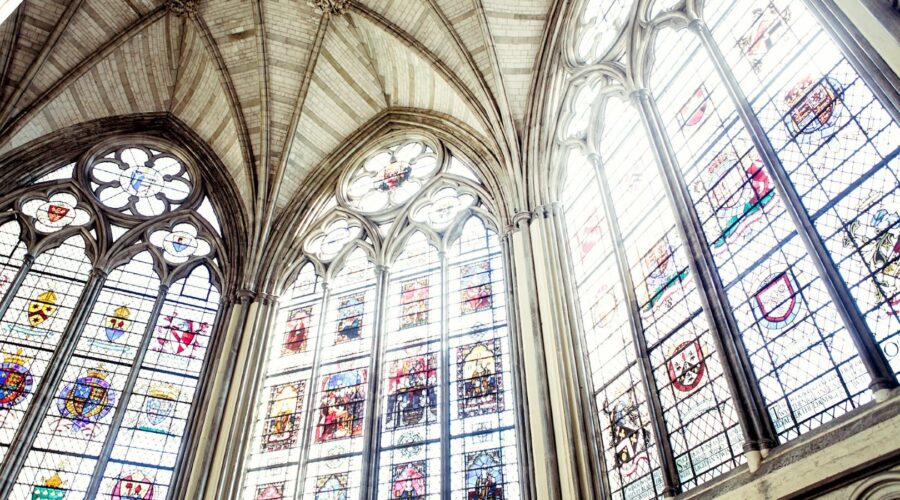
Unveiling the Enigma: Greg Locke Church
Introduction
Greg Locke, a controversial figure in the realm of modern Christianity, has garnered immense attention for his unconventional teachings and flamboyant persona. His church, known as Global Vision Bible Church (GVBC), has become a hub of both fervent followers and staunch critics.
Greg Locke: The Charismatic Preacher
Early Life and Ministry
Gregory Louis Locke was born on January 24, 1976, in Dickson County, Tennessee. Raised in a Christian household, he experienced a transformative moment at age 17, which led him to pursue a life in ministry.
Locke studied at Middle Tennessee State University before enrolling at Word of Life Bible Institute in Florida. After graduating, he returned to Nashville and founded GVBC in 1996.
Unorthodox Teachings and Style
Locke’s preaching style is characterized by its intensity, emotionalism, and use of provocative language. He often resorts to fiery rhetoric and controversial statements, which have drawn both praise and criticism from the Christian community.
Locke’s teachings diverge from traditional Christian doctrine in several ways. He emphasizes personal experience over scriptural authority and advocates for faith-based miracles. He also promotes the concept of “name-it-and-claim-it” theology, which posits that believers can manifest their desires by speaking them into existence.
Global Vision Bible Church: The Center of Controversy
Membership and Outreach
GVBC has grown significantly since its inception, attracting thousands of members from across the country. The church operates multiple campuses in Tennessee and Florida and hosts various outreach programs that include food distribution drives and community events.
Financial Controversies
Locke and GVBC have faced allegations of financial impropriety. In 2020, the church was investigated by the Tennessee Comptroller’s Office for allegedly using church funds for personal expenses. The investigation concluded that there was no evidence of criminal wrongdoing, but it did reveal that Locke had borrowed funds from the church without proper authorization.
Political Involvement
GVBC has actively engaged in political discourse, particularly during the COVID-19 pandemic. Locke has made several controversial statements about the virus, including questioning the efficacy of masks and vaccines. The church has also hosted political rallies and endorsed candidates who align with Locke’s conservative views.
Assessing the Impact of Greg Locke and GVBC
Positive Impacts
- Spiritual Growth: Locke’s message has resonated with individuals seeking a personal connection with God. Many members have reported experiencing transformative spiritual experiences through GVBC.
- Community Involvement: GVBC actively engages in community outreach, providing support to individuals and families in need.
Negative Impacts
- Polarizing Teachings: Locke’s unorthodox teachings have created division within the Christian community. Critics argue that his emphasis on personal experience undermines biblical authority.
- Financial Concerns: Allegations of financial impropriety have raised questions about GVBC’s transparency and accountability.
- Political Involvement: The church’s involvement in political discourse has alienated individuals who feel that it compromises the integrity of the gospel message.
Conclusion
Greg Locke and Global Vision Bible Church represent a complex phenomenon in modern Christianity. Their unconventional approach has attracted both ardent supporters and vocal critics. While Locke’s teachings have provided spiritual growth for some, others express concern about their potential to undermine biblical authority. The financial and political controversies surrounding GVBC have further polarized opinions.
Ultimately, it is up to each individual to determine their stance on Greg Locke and GVBC. It is essential to approach the topic with open-mindedness, critical thinking, and a desire to understand the perspectives of all involved.

Encounter Church: A Transformative Experience of God
What is an Encounter Church?
An encounter church is a faith community that prioritizes personal encounters with God. Unlike traditional churches that emphasize doctrine and liturgy, encounter churches focus on creating an environment where individuals can connect with the divine and experience its transformative power.
Key Characteristics
- Emphasis on personal experience: Encounter churches believe that a living relationship with God is paramount and encourage congregants to seek encounters through prayer, worship, and other spiritual practices.
- Charismatic worship: Worship services often include elements like raised hands, spontaneous prayer, and contemporary music, which facilitate emotional and spiritual connection.
- Manifestations of the Holy Spirit: Encounter churches recognize the gifts of the Holy Spirit, such as speaking in tongues, healing, and prophecy. These manifestations are believed to enhance the worship experience and foster a sense of unity.
- Focus on inner healing: Encounter churches address emotional and spiritual wounds through prayer, counseling, and deliverance ministries. They believe that healing the heart allows for a deeper connection with God.
- Outreach and community service: Encounter churches are often involved in outreach programs and community service initiatives, demonstrating their commitment to love and compassion.
Benefits of Attending an Encounter Church
Spiritual Transformation
Encounter churches provide a conducive environment for spiritual growth and transformation. By fostering an atmosphere of intimacy with God, congregants experience a deepening of their faith and a closer walk with the divine.
Emotional Healing
Through prayer, counseling, and deliverance ministries, encounter churches facilitate healing of emotional wounds and unresolved issues. This leads to greater emotional resilience, self-awareness, and spiritual freedom.
Personal Empowerment
Encounter churches empower individuals by encouraging them to tap into their own spiritual gifts and abilities. This leads to a sense of purpose, confidence, and a life lived in alignment with God’s plan.
Community and Support
Encounter churches foster a sense of community and support among congregants. Through shared experiences, prayer groups, and other activities, individuals connect with like-minded people and receive encouragement in their faith journeys.
How to Find an Encounter Church
Research Online
Global Encounter and Resonance Church are examples of prominent encounter churches. Search for churches in your area that emphasize personal encounters and offer similar characteristics.
Attend a Service
Attending a service is the best way to experience an encounter church firsthand. Observe the worship, listen to the pastor’s message, and interact with the congregants to get a sense of the church’s atmosphere and values.
Connect with the Church
If you feel drawn to a particular encounter church, connect with the leadership or outreach team. They can provide more information, schedule a visit, or answer any questions you may have.
Tips for Choosing the Right Encounter Church
- Seek a comfortable environment: The church should feel welcoming and conducive to spiritual growth.
- Align with the beliefs: Ensure that the church’s teachings and values resonate with your own beliefs and spiritual convictions.
- Observe the leadership: Pay attention to the pastor’s character, integrity, and spiritual maturity.
- Consider the size and location: Choose a church that aligns with your preferred size and accessibility.
Conclusion
Encounter churches offer a unique and transformative spiritual experience that emphasizes personal encounters with God, emotional healing, personal empowerment, and community support. By choosing an encounter church that aligns with your needs and beliefs, you can embark on a journey of spiritual growth and encounter the transformative power of the divine.
Frequently Asked Questions
Question Answer Are encounter churches considered evangelical? Yes, many encounter churches are part of the evangelical movement and hold to traditional Christian beliefs. Do all encounter churches allow for manifestations of the Holy Spirit? While most encounter churches do, it is important to note that some may have different perspectives on this aspect. Is it possible to have an encounter with God outside of an encounter church? Yes, it is possible to have a personal encounter with God anywhere, but encounter churches provide a specific environment for seeking and connecting with the divine. 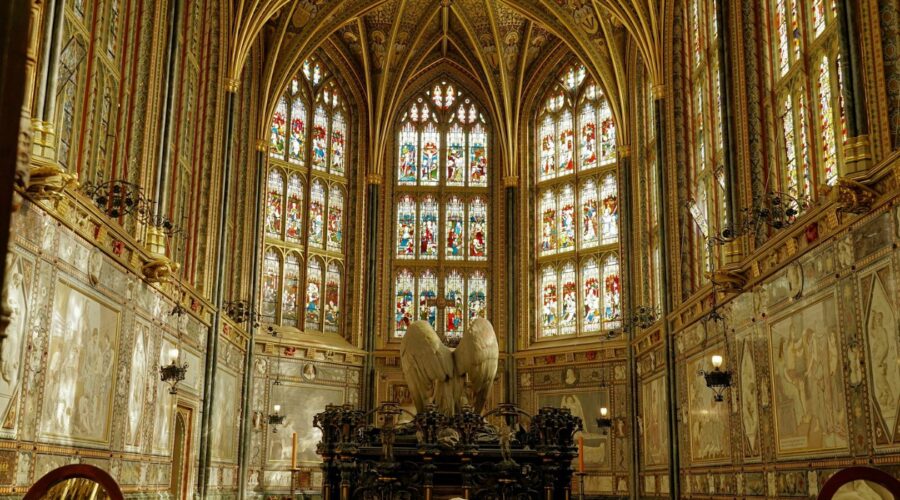
Unveiling the Novena to St. Joseph: A Path to Spiritual Renewal and Guidance
In the tapestry of faith, the Novena to St. Joseph stands as a vibrant thread, connecting us to the powerful patronage of the earthly father of Jesus Christ. For centuries, devotees have turned to this sacred prayer, seeking solace, guidance, and divine intervention in their lives. Join us as we explore the intricacies of the Novena to St. Joseph, its origins, traditions, and the profound impact it can have on our spiritual journeys.
The History and Origins of the Novena
The Novena to St. Joseph is believed to have originated in the 19th century. Its roots can be traced to the writings of the Venerable Francis Xavier Lasance, who authored a popular prayer manual that included a nine-day devotion to St. Joseph. Over time, the Novena gained widespread recognition and became a beloved tradition among Catholics worldwide.
The Significance of the Number Nine
The Novena refers to a period of nine days dedicated to prayer and devotion. In Catholic tradition, the number nine holds significant symbolic value, representing the fullness of time and completeness. The Nine Days of the Novena represent the nine months that the Blessed Virgin Mary carried Jesus Christ in her womb. This connection serves as a reminder of St. Joseph’s role as Jesus’ earthly guardian and Protector.
The Structure of the Novena
The traditional Novena to St. Joseph consists of nine consecutive days of prayer. Each day begins with a brief opening prayer, followed by a meditation on a specific aspect of St. Joseph’s life and virtues. The meditation usually includes a passage from the Bible and a reflection on its significance. The Novena concludes with a final prayer, invoking St. Joseph’s intercession and seeking his guidance and protection.
Day 1: Faith and Obedience
Focus on St. Joseph’s unwavering faith and obedience to God’s will, as exemplified in his acceptance of Mary as his wife and his role as Jesus’ earthly father.
Day 2: Humility and Service
Reflect on St. Joseph’s humility and his willingness to serve others, setting aside his own ambitions for the well-being of his family.
Day 3: Courage and Protection
Consider St. Joseph’s courageous nature and his unwavering protection of the Holy Family, guiding them through danger and uncertainty.
Day 4: Chastity and Purity
Meditate on St. Joseph’s virtue of chastity and his role as the chaste guardian of the Virgin Mary and her divine Son.
Day 5: Patience and Perseverance
Reflect on St. Joseph’s patience and perseverance in the face of challenges and adversity, serving as an example of enduring faith.
Day 6: Industry and Diligence
Consider St. Joseph’s industrious nature and his dedication to his craft as a carpenter, providing for his family through honest labor.
Day 7: Poverty and Simplicity
Meditate on St. Joseph’s embrace of poverty and his contentment with the simple things in life, teaching us the value of detachment.
Day 8: Compassion and Mercy
Reflect on St. Joseph’s compassionate nature and his willingness to show mercy to others, including the outcast and the vulnerable.
Day 9: Patronage and Intercession
Pray for St. Joseph’s powerful patronage and intercession, seeking his guidance and protection in our daily lives and in times of need.
How to Pray the Novena
- Set aside a specific time each day for prayer, preferably at the same time.
- Find a quiet and comfortable place where you can focus on your devotion.
- Follow the daily prayers as outlined in the prayer manual or online resources.
- Meditate on the daily reflection and allow it to speak to your heart.
- Be open to the Holy Spirit’s guidance and the graces that may come through the Novena.
Benefits of Praying the Novena
- Deepens our relationship with St. Joseph and strengthens our faith.
- Provides guidance and support during challenging times.
- Fosters virtues such as humility, patience, and perseverance.
- Promotes spiritual renewal and growth.
- Can lead to specific graces and favors, depending on our intentions.
Tips for a Meaningful Novena
- Prepare your heart by setting an intention for the Novena and reflecting on your spiritual needs.
- Be consistent with your daily prayers and avoid skipping days.
- Take time for silent reflection and meditation after each prayer.
- Consider journaling your thoughts and experiences throughout the Novena.
- Share your Novena journey with a trusted friend or spiritual director for support and encouragement.
Conclusion
The Novena to St. Joseph is a powerful spiritual practice that can transform our lives by connecting us to the wisdom and guidance of this beloved saint. Through nine days of prayer and meditation, we deepen our faith, cultivate virtues, and seek St. Joseph’s intercession in our daily lives and aspirations. Whether we face challenges, seek guidance, or simply desire a closer relationship with God, the Novena to St. Joseph offers a path of spiritual renewal and profound grace.
As we embark on this sacred journey, let us embrace the words of Pope Pius XII, who said, “St. Joseph, who in the silence of a life hidden and dedicated to work was the faithful Guardian of the mysteries of our redemption, may he always guard and protect the Church of his divine Son.” May the Novena to St. Joseph guide us closer to God and inspire us to live lives of faith, service, and love.
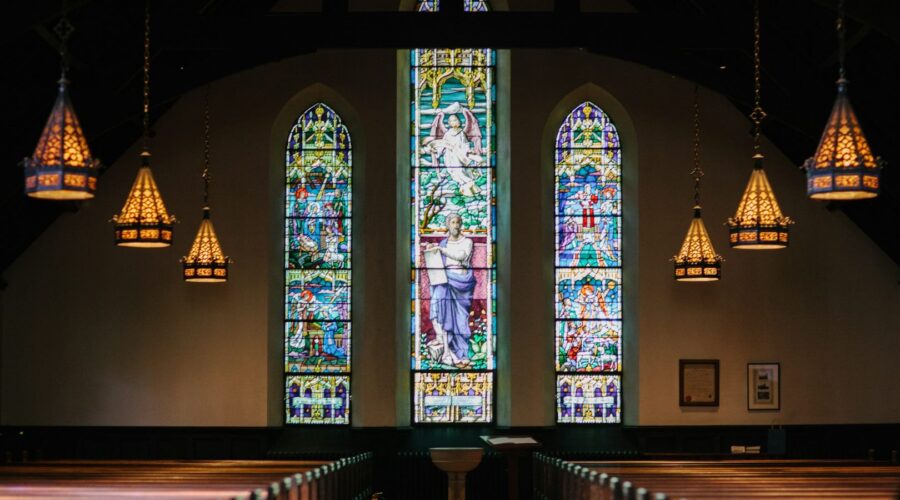
Gaudi’s Sagrada Familia: A Masterpiece of Catalan Modernism
Introduction
The Sagrada Familia is a towering masterpiece of Catalan Modernism and the most famous work of the renowned architect Antoni Gaudí. This colossal basilica, located in the heart of Barcelona, Spain, has been under construction for over a century and is still not complete. Nevertheless, the Sagrada Familia has become a symbol of Barcelona and a must-see for visitors from around the world.
History of the Sagrada Familia
The construction of the Sagrada Familia began in 1882, following the plans of the architect Francisco de Paula del Villar. However, in 1883, Gaudí took over the project and redesigned it in his unique style. Gaudí worked on the Sagrada Familia for the rest of his life, and even though he died in 1926, the basilica continues to be built according to his original plans.
The Impact of Gaudí
Gaudí’s influence on the Sagrada Familia is evident in every aspect of the building. He incorporated elements of nature, such as trees, flowers, and animals, into the design. He also used a variety of colorful mosaics and stained glass to create a vibrant and dynamic interior. Gaudí’s goal was to create a “perfect” church, one that would be both beautiful and functional.
The Architectural Features of the Sagrada Familia
The Sagrada Familia is a complex and multifaceted building, with a wealth of architectural features to explore.
The Facades
The Sagrada Familia has three facades: the Nativity Facade, the Passion Facade, and the Glory Facade. The Nativity Facade, completed in 1894, is the most elaborate and is adorned with scenes from the birth of Christ. The Passion Facade, completed in 1954, depicts the suffering and death of Jesus. The Glory Facade is still under construction, but it is expected to be completed by 2026.
The Interior
The interior of the Sagrada Familia is just as impressive as the exterior. The nave is supported by massive columns that resemble trees, and the ceiling is a kaleidoscope of colors and light. The apse is home to a stunning stained-glass window that depicts the Virgin Mary.
The Towers
The Sagrada Familia is crowned by 18 towers, which represent the 12 apostles, the four evangelists, and the Virgin Mary. The tallest tower, the central tower, is 172 meters high and is still under construction.
Visiting the Sagrada Familia
The Sagrada Familia is one of the most popular tourist attractions in Barcelona. Visitors can choose from a variety of tours, ranging from guided tours to self-guided tours. It is recommended to book tickets in advance, especially during peak season.
Tips for Visiting
* Book your tickets in advance to avoid queues.
* Visit early in the morning or late in the afternoon to avoid the crowds.
* Take your time to explore the basilica and appreciate all of its details.
* Climb the towers for a panoramic view of Barcelona.
* Visit the Sagrada Familia Museum to learn more about the history of the basilica and Gaudí’s work.Conclusion
The Sagrada Familia is a masterpiece of architecture and a testament to the genius of Antoni Gaudí. It is a must-see for visitors to Barcelona and a symbol of the city’s vibrant culture and history.
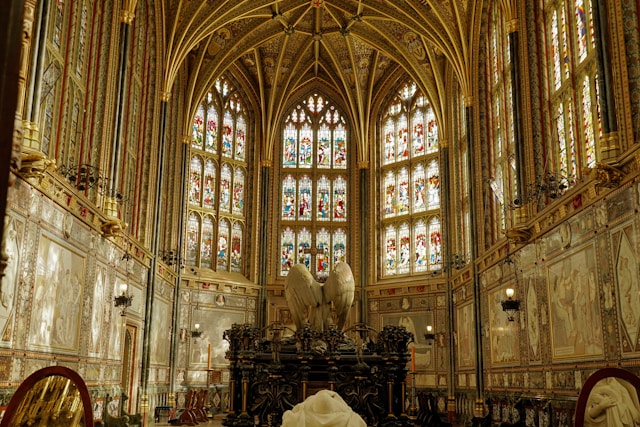
Find Your Local LDS Church: A Comprehensive Guide to the Church Locator
Introduction
Finding the nearest Latter-day Saints (LDS) church is now easier than ever with the Church Locator, an online tool provided by the Church itself. Whether you’re a seasoned member or a curious visitor, this guide will provide you with all the information you need to locate an LDS church in your area.
Using the Church Locator
Website
The Church Locator is accessible through the official Church website:https://www.churchofjesuschrist.org/maps/meetinghouses/
Mobile App
The Church Locator is also available as a mobile app for iOS and Android devices. You can download it from the App Store or Google Play.
Search Options
The Church Locator offers various search options to help you find a church:
- Address: Enter a specific address or city/town.
- Zip Code: Use the postal code of your location.
- Current Location: Use your device’s GPS to find churches near you.
Results
Once you search, the Church Locator will display a list of LDS churches in your area. Each result includes the following information:
- Name: The official name of the church.
- Address: The street address of the church.
- Phone Number: The contact number of the church.
- Language: The primary language used in the church.
- Schedule: The regular meeting times and activities of the church.
Additional Features
Ward Boundaries
The Church Locator also allows you to view the boundaries of each ward (a local congregation within the Church). This can be helpful if you’re not sure which ward you belong to or if you’re moving to a new area.
Meetinghouse Details
By clicking on a specific church result, you can access more detailed information, including:
- Building Capacity: The seating capacity of the church.
- Amenities: Features such as a cultural hall, gymnasium, or baptistry.
- Accessibility: Information on wheelchair access and other accommodations.
Language Options
The Church Locator supports multiple languages, allowing you to find churches in your preferred language. You can change the language from the drop-down menu on the main search page.
Tips for Using the Church Locator
- Be Specific: When searching by address, be as specific as possible to get accurate results.
- Check the Schedule: Before visiting a church, check the schedule to ensure it aligns with your availability.
- Contact the Church: If you have any questions or need further assistance, contact the church directly using the phone number provided.
- Consider Ward Boundaries: If you’re planning to attend a ward, check the boundaries to ensure you’re in the correct location.
Conclusion
The LDS Church Locator is a valuable tool for finding the nearest LDS church. Whether you’re a new member, a returning visitor, or simply exploring your options, this guide will help you connect with the local LDS community. Remember to take advantage of the additional features and tips to enhance your experience.
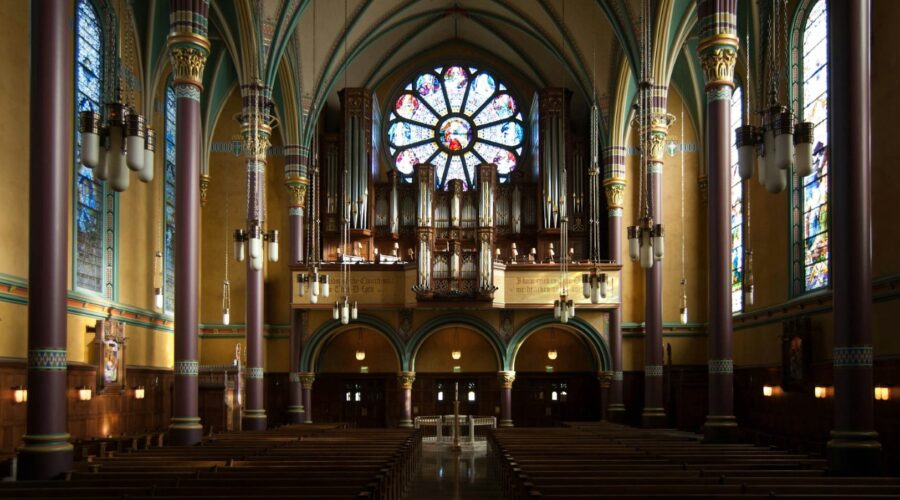
Discover the Unwavering Foundation: Exploring the Church on the Rock
What is the Church on the Rock?
The Church on the Rock refers to a metaphor used by Jesus Christ in the Bible, specifically in the Gospel of Matthew 16:18, where he proclaims, “And I tell you, you are Peter, and on this rock I will build my church, and the gates of Hades will not prevail against it.”
In this context, “Peter” represents the Greek word “petra,” meaning a large piece of rock or bedrock. Thus, the Church on the Rock signifies a spiritual entity built upon the foundation of Peter’s faith and the teachings of Jesus Christ.
The Significance of the Rock
A. Stability and Immovability
The rock symbolizes firmness, stability, and immovability. As Jesus builds his church upon this rock, he ensures that it will withstand the trials, tribulations, and challenges that arise in the world.
B. Unwavering Foundation
The rock serves as an unshakable foundation upon which the church is constructed. This foundation ensures that the church remains grounded in the teachings and principles of Jesus Christ, providing a solid base for its members.
The Role of Peter
While the term “Church on the Rock” emphasizes the foundation of Jesus Christ’s teachings, it also acknowledges the significance of Peter’s role in the early church.
- Leadership: Peter served as a primary leader among the disciples, guiding and directing the nascent church.
- Confession of Faith: Peter’s declaration of faith in Jesus as the “Christ, the Son of the living God” (Matthew 16:16) became a cornerstone of the church’s belief system.
- Foundation: Peter’s faith and his unwavering commitment to Christ laid the foundation upon which the church was built.
Implications for the Church Today
The metaphor of the Church on the Rock holds profound implications for churches today:
A. Christ as the Cornerstone
The church remains firmly established on the teachings and example of Jesus Christ, who serves as the cornerstone of the faith.
B. Unwavering Faith
Like Peter, the church is called to demonstrate unwavering faith in Christ and his teachings, even amidst adversity.
C. Discipleship and Mission
The church is commissioned to continue the mission of Christ by discipling others and proclaiming the gospel message.
Conclusion
The Church on the Rock represents a spiritual entity founded upon the teachings of Jesus Christ and the faith of Peter. It symbolizes stability, immovability, and an unwavering foundation. As the church continues its mission today, it draws strength from this metaphor, striving to remain grounded in Christ and to boldly proclaim his message to the world.

Unlocking Faith and Wisdom: Explore the Powerful Sermons of Voddie Baucham
About Voddie Baucham
Voddie Baucham is a renowned pastor, author, and theologian known for his insightful and thought-provoking sermons. With over 25 years of ministry experience, he has inspired countless individuals to deepen their faith and understanding of Scripture.
Ministry Background
* Senior pastor at Grace Family Baptist Church in Spring, Texas
* Taught at African Christian University (Zambia) and Southwestern Baptist Theological Seminary
* Author of several books, including “Fault Lines” and “The Everlasting Gospel”Exploring Baucham’s Sermons
Baucham’s sermons are characterized by their:
Biblical Foundation
* Rooted in a deep understanding of Scripture
* Expository in nature, carefully examining the text verse by verseCultural Relevance
* Addresses contemporary issues and challenges
* Explores the implications of biblical principles for daily lifePractical Application
* Provides practical insights and encouragement for personal growth
* Empowers listeners to apply biblical truths to their own livesKey Themes in Baucham’s Sermons
1. The Gospel
* Emphasizes the centrality of the gospel in the Christian faith
* Explains the nature of sin, the need for salvation, and the transformative power of Christ’s sacrifice2. Marriage and Family
* Provides biblical principles for building strong marriages and families
* Addresses issues such as communication, conflict resolution, and parenting3. Racial Reconciliation
* Calls for unity and reconciliation between different races
* Challenges racism and promotes a biblical understanding of human equality4. Biblical Literacy
* Encourages Christians to be well-versed in Scripture
* Emphasizes the importance of personal Bible study and devotional practices5. Christian Living
* Explores topics related to discipleship, sanctification, and Christian maturity
* Provides guidance on topics such as temptation, perseverance, and spiritual warfareSermon Series: Notable Examples
Fault Lines
* Examines the key theological and social issues that divide the church today
* Explores topics such as biblical authority, homosexuality, and social justiceThe Everlasting Gospel
* Focuses on the unwavering truth of the gospel throughout history
* Traces the gospel message from Genesis to RevelationLiving the Cross-Shaped Life
* Challenges listeners to embrace the sacrificial and countercultural nature of Christian discipleship
* Explores topics such as humility, love, and forgivenessAccessing Voddie Baucham’s Sermons
* Grace Family Baptist Church: Attend in-person services or listen to sermons online at gracefamilybaptist.org
* Sermon Audio: Find Baucham’s sermons on sermonaudio.com
* YouTube: Watch Baucham’s sermons on the Grace Family Baptist Church YouTube channel
* Podcasts: Subscribe to Baucham’s podcast, “Ask Voddie,” on major podcast platformsTips for Listening to Baucham’s Sermons
* Prepare: Read the passage of Scripture that Baucham will be preaching on before attending the sermon.
* Listen actively: Focus on the main points and take notes if needed.
* Reflect: After the sermon, take time to reflect on the message and its implications for your own life.
* Apply: Identify practical steps you can take to apply the teachings of the sermon to your daily life.
* Follow up: Visit the Grace Family Baptist Church website or connect with Baucham on social media for further resources and support.Conclusion
Voddie Baucham’s sermons offer a wealth of biblical insights, practical wisdom, and cultural commentary. Through his exposition of Scripture and relevant application, he challenges listeners to deepen their faith, grow in their understanding of God, and live as passionate followers of Christ. By accessing and listening to Baucham’s sermons, you can unlock a treasure trove of spiritual enrichment and guidance that will empower you to live a life that is both biblically sound and personally transformative.
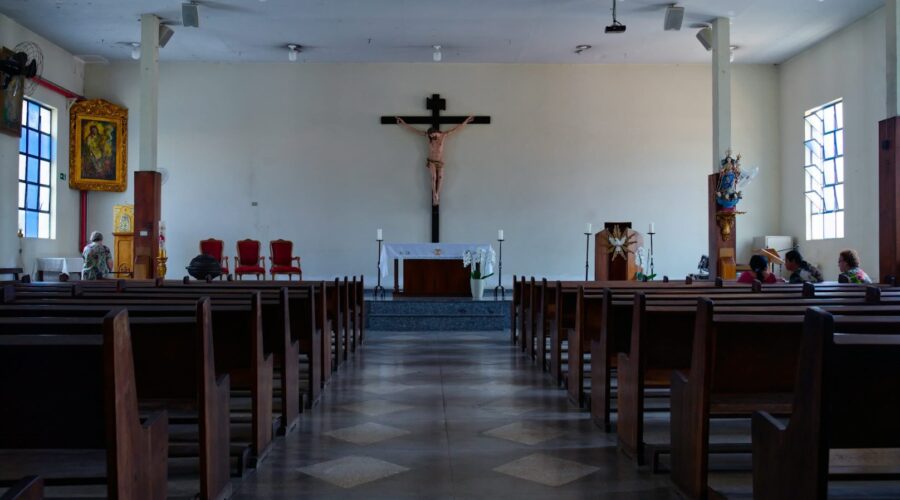
Discover the Lives and Lessons of the Saints: A Catholic Guide to Daily Inspiration
Introduction: The Significance of Saints in Catholic Tradition
The Catholic Church holds saints in the highest regard, recognizing them as models of faith, virtue, and devotion. They have endured countless trials and tribulations, demonstrating unwavering obedience to God and serving as guiding lights for the faithful. The “Saint of the Day” tradition provides an opportunity for Catholics to learn about the lives of these exemplary individuals and draw inspiration from their heroic acts.
Honoring the Saints: A Daily Reminder of God’s Grace
The Catholic tradition of honoring saints goes back centuries. Each day, the Church celebrates the feast day of a particular saint or group of saints. These feast days serve as a reminder of God’s grace and mercy, as well as the transformative power of faith.
Benefits of Honoring the Saints:
*
- Receive inspiration and guidance from their example
- Strengthen our faith and devotion
- Intercede for us through prayer
- Provide models of virtue and holiness
Finding the Saint of the Day: Resources and Websites
There are numerous ways to learn about and celebrate the Saint of the Day. Here are some helpful resources:
*
Examples of Notable Saints and Their Virtues
Throughout history, countless individuals have been recognized as saints by the Catholic Church. Here are some notable examples and the virtues they exemplified:
*
Saint Francis of Assisi:
Humility, poverty, love of nature, and compassion for all creatures
*Saint Teresa of Calcutta:
Service to the poor, sick, and dying, and unwavering faith in God’s love
*Saint Maximilian Kolbe:
Sacrifice, selflessness, and martyrdom
*Saint John Paul II:
Pastoral care, pilgrimage, and dialogue between religions
Incorporating Saint Veneration into Daily Life
Honoring saints can be integrated into our daily lives in various ways:
*
Prayer:
Invoke the intercession of saints through prayer, asking for their guidance and protection.
*Reading:
Learn about the lives of saints through books, online resources, or biographies.
*Pilgrimages:
Visit shrines and pilgrimage sites dedicated to saints to experience their presence and seek their blessings.
*Devotionals:
Practice regular devotions to specific saints, such as reciting the rosary or lighting candles.
Conclusion: The Enduring Legacy of Saints
The saints are not merely historical figures but living examples of God’s love and grace. Through their lives and teachings, they provide us with inspiration, guidance, and hope. By honoring the Saint of the Day, we can deepen our faith, strengthen our resolve, and emulate the virtues of these extraordinary individuals. May their legacy continue to inspire and guide us on our journey of faith.
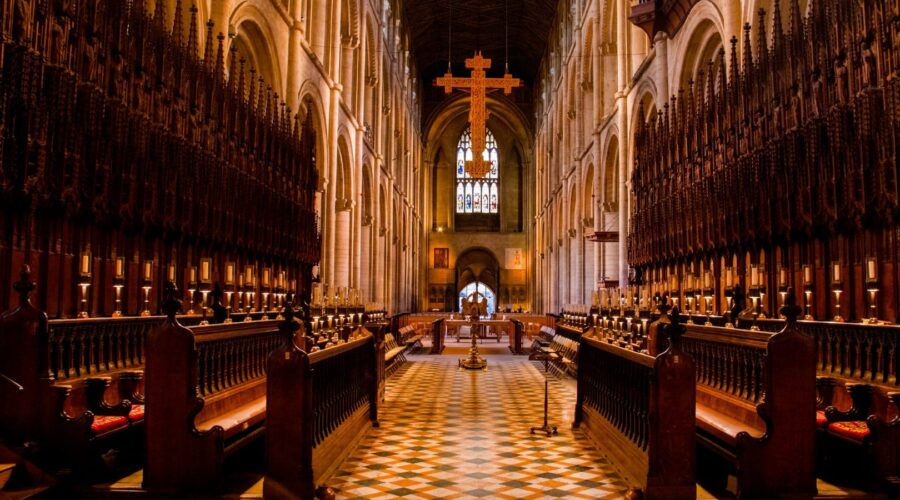
Discover the Rich History, Architecture, and Significance of Trinity Church
Nestled in the heart of Manhattan’s Financial District, Trinity Church is an iconic landmark that has witnessed countless historical events and architectural transformations over the centuries.
A Journey Through Time
Colonial Beginnings (1697-1789)
In 1697, Governor Benjamin Fletcher gifted land to the Anglican parish of Trinity Church, marking the start of its existence. The first wooden church was built in 1698, serving as a place of worship for the growing British population.
Federal Period (1789-1839)
After the American Revolution, Trinity Church became an Episcopal parish. During this period, the iconic spire was added to the church in 1790, designed by architect John McComb Jr. The spire became a symbol of the United States’ growing wealth and power.
Victorian Era (1839-1900)
The 19th century witnessed significant expansion and renovation at Trinity Church. In 1839, the nave was reconstructed by Richard Upjohn, and in 1846, the chancel was redesigned by James Renwick Jr. These renovations transformed the church into a Gothic Revival masterpiece.
Architectural Marvel
Gothic Revival Design
Trinity Church exemplifies the Gothic Revival style, incorporating pointed arches, ribbed vaults, and flying buttresses. The intricate carvings, stained glass windows, and vaulted ceilings evoke a sense of grandeur and reverence.
The Spire
Standing at 284 feet, the spire of Trinity Church is one of the most recognizable landmarks in New York City. Its elegant shape and filigree detailing have made it an iconic symbol of the city’s skyline.
Interior Adornments
The interior of Trinity Church is equally impressive. The chancel features a magnificent altarpiece by Benjamin West, depicting the Resurrection of Christ. The nave is lined with marble columns and contains a pulpit carved from a single block of mahogany.
Spiritual and Cultural Center
Religious Significance
As the oldest parish in New York City, Trinity Church has played a vital role in the city’s spiritual development. The church has fostered interfaith dialogue and provided support to the community throughout its history.
Community Outreach
Trinity Church is deeply involved in social outreach programs, serving the homeless, providing job training, and offering educational opportunities. The church’s community center, Trinity Commons, is a hub for these initiatives.
Cultural Legacy
Trinity Church has hosted numerous historical events and celebrations. It served as a meeting place for the Continental Army during the Revolutionary War and hosted the first presidential inauguration of George Washington in 1789.
Visitor Information
Tours and Services
Trinity Church offers guided tours for visitors to explore its architecture, history, and artifacts. Visitors can also attend daily services and special programs held throughout the year.
Location and Hours
75 Broadway
New York, NY 10006Monday-Saturday: 10:00 AM – 4:00 PM
Sunday: 12:00 PM – 4:00 PMConclusion
Trinity Church stands as a testament to the resilience and evolution of New York City. Its architectural beauty, historical significance, and spiritual impact have made it an enduring landmark that continues to inspire and uplift visitors and the city it calls home.
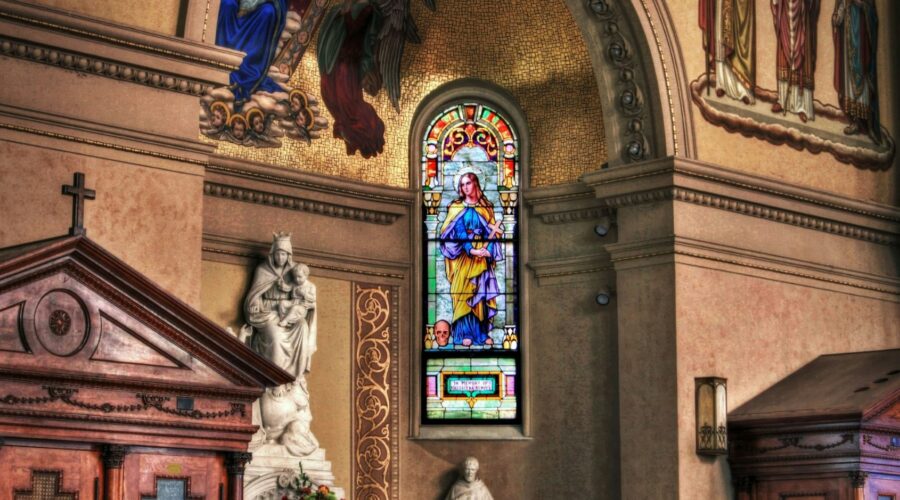
Today’s Gospel Catholic: Embracing the Word of God in Modern Times
Introduction
In the ever-evolving world of today, it is more important than ever for Catholics to connect with the Gospel and live out its teachings. With the proliferation of technology and the fast-paced nature of modern life, it can be challenging to find time for spiritual reflection and prayer. However, the Gospel of Jesus Christ remains a vital source of guidance, inspiration, and hope for those who seek it. This blog post is dedicated to exploring the role of the Gospel in the lives of today’s Catholics.
The Gospel as a Source of Guidance
Navigating the Challenges of Modern Life
The Gospel provides a moral compass for Catholics, helping them navigate the complex challenges of modern life. From ethical decision-making to interpersonal relationships, the teachings of Jesus offer clarity and direction. By aligning our thoughts and actions with the Gospel, we can find purpose and meaning in a world that often feels chaotic and uncertain.
The Parables as Practical Wisdom
Jesus frequently used parables to convey His message in an accessible and engaging manner. These stories offer practical wisdom and guidance on a wide range of topics. From the parable of the Good Samaritan, which teaches us about love and compassion, to the parable of the Prodigal Son, which emphasizes the importance of forgiveness, the parables provide timeless lessons that are relevant to our daily lives.
The Gospel as a Source of Inspiration
The Example of Jesus Christ
The life and teachings of Jesus Christ are a powerful source of inspiration for Catholics. Jesus’ unwavering love, compassion, and forgiveness remind us of the qualities we should strive to embody. His example inspires us to be agents of change and to spread God’s love to the world.
The Saints as Role Models
Throughout history, countless saints have lived out the Gospel message with extraordinary faithfulness. Their stories of courage, perseverance, and self-sacrifice serve as beacons of hope and inspiration for Catholics today. By studying the lives of the saints, we can learn from their experiences and draw strength from their example.
The Gospel as a Source of Hope
Eternal Life and Salvation
The Gospel proclaims the promise of eternal life and salvation to all who believe in Jesus Christ. This hope is a powerful source of comfort and encouragement for Catholics, especially in times of adversity. Knowing that we are destined for a better life beyond the trials of this world gives us strength and resilience.
The Kingdom of God
The Gospel also speaks of the Kingdom of God, a realm of peace, justice, and love that will be established on Earth. This hope reminds us that even in the midst of darkness, there is light. The Gospel encourages us to work towards the realization of this Kingdom, both in our own lives and in the world around us.
Practices for Deepening Our Relationship with the Gospel
Daily Scripture Reading
One of the most important practices for today’s Catholics is daily Scripture reading. By spending time with the Word of God each day, we allow it to penetrate our hearts and transform our lives. There are many ways to incorporate Scripture reading into our daily routines, such as reading during prayer, meditation, or mealtimes.
Attend Mass Regularly
Mass is the central liturgical celebration of the Catholic Church. It is a privileged opportunity to participate in the Eucharist, which is a source of nourishment and grace. By attending Mass regularly, we connect with the Gospel message and strengthen our relationship with Christ.
Prayer and Meditation
Prayer and meditation are essential practices for deepening our understanding of the Gospel. Through prayer, we can converse with God, express our gratitude, and seek guidance. Meditation allows us to reflect on Scripture and apply its teachings to our own lives.
Community Involvement
Living out the Gospel is not a solo endeavor. Catholics are called to be part of a community of faith, where they can support and encourage one another. By participating in parish events, volunteering our time, or simply being there for each other, we put the Gospel message into action and build a more just and loving world.
Conclusion
Today’s Gospel Catholic is one who embraces the Word of God and seeks to live out its teachings in modern times. By making daily Scripture reading, Mass attendance, prayer, meditation, and community involvement integral parts of our lives, we can experience the transformative power of the Gospel and share its message of love, hope, and salvation with the world. As we navigate the challenges of modern life and strive to live as Christ-centered disciples, may the Gospel continue to guide, inspire, and sustain us on our journey.
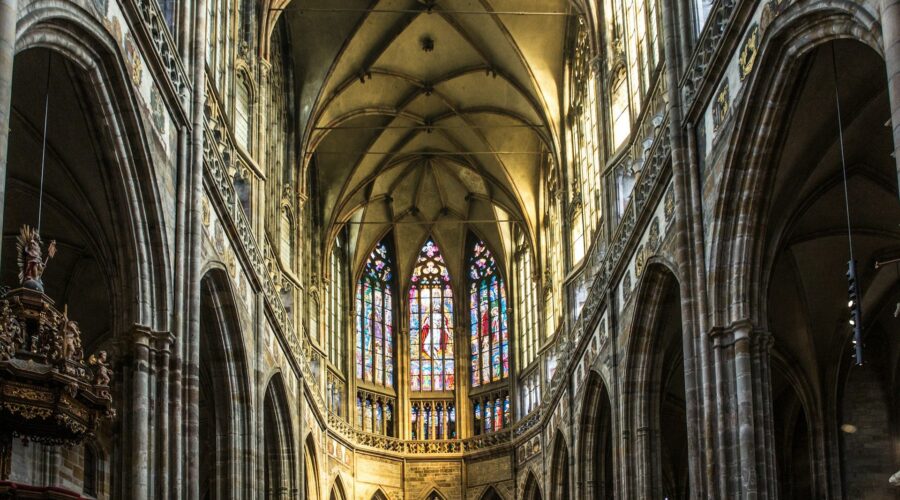
Discover the Apostolic Church in Your Neighborhood: A Guide to Finding Fellowship and Spiritual Growth
What is an Apostolic Church?
Apostolic churches are Christian congregations that trace their roots to the original apostles of Jesus Christ. They emphasize the importance of biblical teachings, the power of the Holy Spirit, and the need for a personal relationship with God. Apostolic churches are often known for their charismatic worship services, vibrant communities, and commitment to evangelism.
Finding an Apostolic Church Near You
There are several ways to find an apostolic church in your area:
- Online directories: Websites like the Apostolic Church Directory and the International Apostolic Church Directory list apostolic churches around the world.
- Local churches: Reach out to local churches in your neighborhood and inquire if they have an apostolic connection.
- Social media: Search for apostolic churches on social media platforms like Facebook and Instagram.
Key Aspects of Apostolic Churches
1. Biblical Foundations
Apostolic churches adhere strictly to the teachings of the Bible, believing it to be the inspired Word of God.
2. The Power of the Holy Spirit
Apostolic churches emphasize the importance of the Holy Spirit in the life of a Christian. They believe that the Holy Spirit empowers believers to live a holy life, witness effectively, and receive spiritual gifts.
3. Evangelism and Discipleship
Apostolic churches are passionate about sharing the gospel of Jesus Christ and making disciples. They often engage in outreach programs and support mission work.
4. Charismatic Worship
Apostolic church services are typically characterized by animated worship, vibrant music, and heartfelt prayer. Many apostolic churches practice Spirit-filled worship, where attendees believe they can experience the presence of God through manifestations of the Holy Spirit.
Benefits of Attending an Apostolic Church
Joining an apostolic church offers several benefits:
- Strong community: Apostolic churches foster a sense of belonging and offer support through fellowship and prayer.
- Spiritual growth: The focus on biblical teachings and the power of the Holy Spirit provides opportunities for spiritual growth.
- Evangelism opportunities: Apostolic churches encourage members to share their faith and participate in evangelistic outreach.
Tips for Choosing an Apostolic Church
When selecting an apostolic church, consider the following:
- Theological alignment: Make sure the church’s teachings are consistent with your biblical beliefs.
- Worship style: Choose a church with a worship style that resonates with you.
- Community involvement: Consider the church’s involvement in the local community and its commitment to outreach.
- Leadership: Research the character and experience of the church’s leadership team.
Conclusion
Finding an apostolic church near you can be a rewarding experience. By exploring the key aspects, benefits, and tips discussed in this guide, you can confidently connect with a community of believers who share your faith, support your spiritual growth, and empower you to live a purpose-filled life.